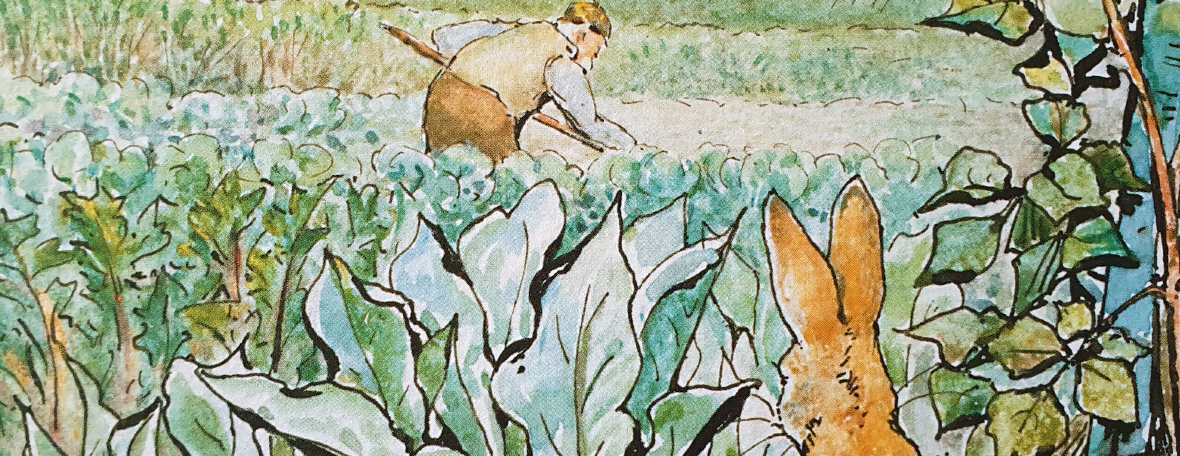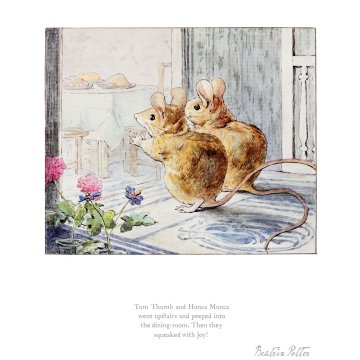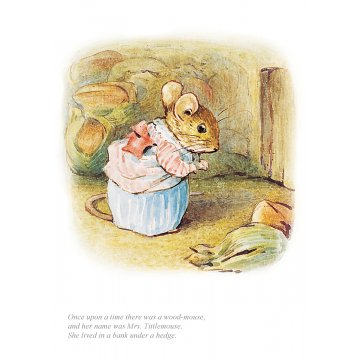We use cookies to make your experience better. To comply with the new e-Privacy directive, we need to ask for your consent to set the cookies. Learn more.
Beatrix Potter
“What heaven can be more real than to retain the spirit-world of childhood?” Beatrix Potter
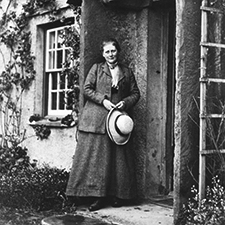
Beatrix Potter was born in London in 1866 and grew up living the conventionally sheltered life of a Victorian girl in a well-to-do household. She was educated at home by a governess with her brother Bertram. Her constant companions were the pet animal she kept which she enjoyed studying and sketching. On summer holidays she delighted in exploring the countryside and learning about plants and animals from her own observations. Beatrix Potter devoted most of her energy to the study of natural history – archaeology, geology, entomology and, especially, mycology. Fungi appealed to Potter’s imagination, both for their evanescent habits and for their coloration. Encouraged by Charles McIntosh, a revered Scottish naturalist, to make her fungi drawings more technically accurate, Potter not only produced beautiful watercolours, but also became an adept scientific illustrator. By 1896 Beatrix Potter had developed her own theory of how fungi spores reproduced and wrote a paper, ‘On the Germination of the Spores of Agaricineae‘. This was presented to a meeting of the Linnean Society on 1 April 1897 by one of the mycologists from the Royal Botanic Gardens, Kew, since women could not attend Society meetings. Her paper has since been lost. Beatrix Potter’s career as a children’s illustrator and storyteller began when The Tale of Peter Rabbit was published by Frederick Warne and Co. in 1902. The public loved it as soon as it appeared and Beatrix went on to produce on average two books a year until 1910.
In the early years of publishing her editor was Norman Warne and they fell in love and became engaged in 1905. Unfortunately the marriage never took place as Norman died suddenly. The money Beatrix Potter earned from her ‘little books’, as she called them, gave her financial independence and she began to purchase property in her beloved Lake District. In 1913 she married William Heelis, a Lakeland solicitor, and made Hill Top farm in the village of Sawrey her permanent home. Writing and painting began to take second place to farming, sheep-breeding and buying stretches of the beautiful Lakeland countryside to ensure their conservation. When she died in 1943 Beatrix Potter bequeathed fifteen farms and over 4,000 acres to the National Trust – a gift which protected and conserved the unique Lake District countryside. Her books, her art, her Herdwick sheep and her indomitable spirit are all part of her enormous legacy.
We hope you enjoy viewing our collection of Beatrix Potter Collector's Edition prints.
-
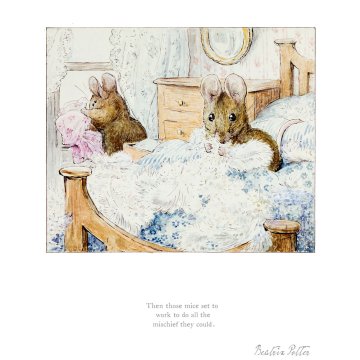
-
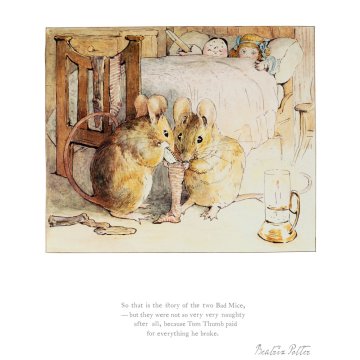
-
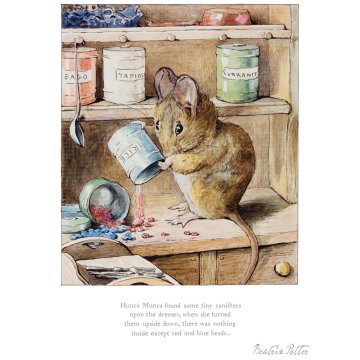
-
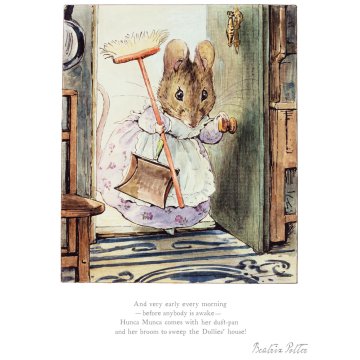
-
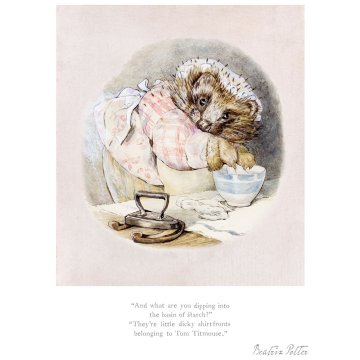
-
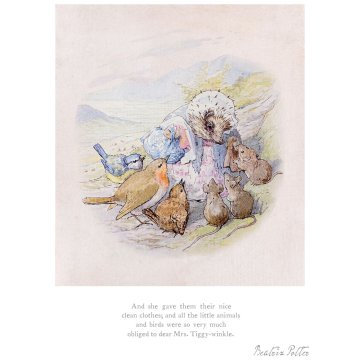
-
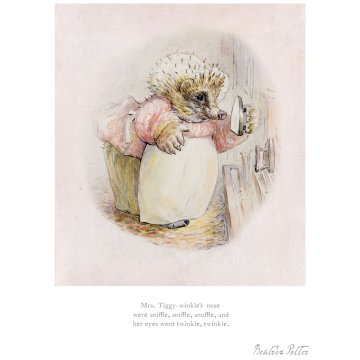 Mrs Tiggy-winkle's nose went sniffle, sniffleOfficial Collector's Edition PrintBeatrix Potter£85.00
Mrs Tiggy-winkle's nose went sniffle, sniffleOfficial Collector's Edition PrintBeatrix Potter£85.00 -
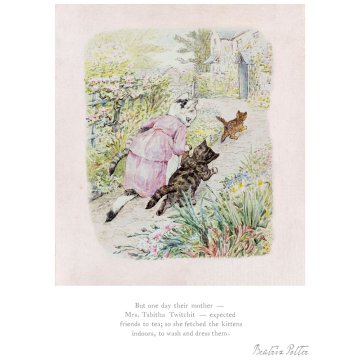 Tabitha Twitchit fetched the kittens indoorsOfficial Collector's Edition PrintBeatrix Potter£85.00
Tabitha Twitchit fetched the kittens indoorsOfficial Collector's Edition PrintBeatrix Potter£85.00 -
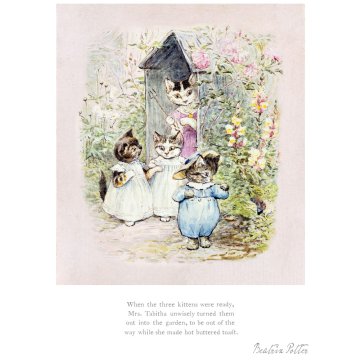
-
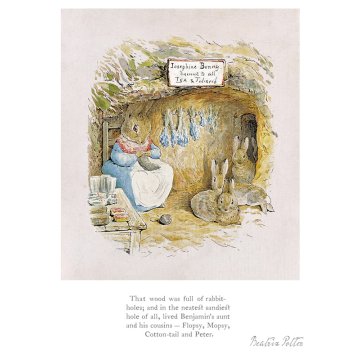 The wood was full of rabbit holesOfficial Benjamin Bunny 120th Anniversary PrintBeatrix Potter£85.00
The wood was full of rabbit holesOfficial Benjamin Bunny 120th Anniversary PrintBeatrix Potter£85.00 -
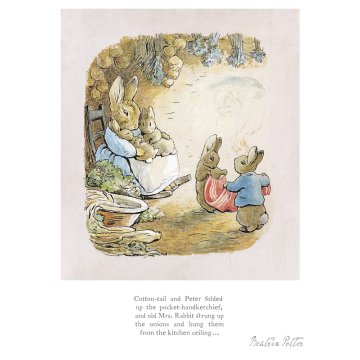 Cotton-tail & Peter folded up the pocket-handkerchiefOfficial Benjamin Bunny 120th Anniversary PrintBeatrix Potter£85.00
Cotton-tail & Peter folded up the pocket-handkerchiefOfficial Benjamin Bunny 120th Anniversary PrintBeatrix Potter£85.00 -
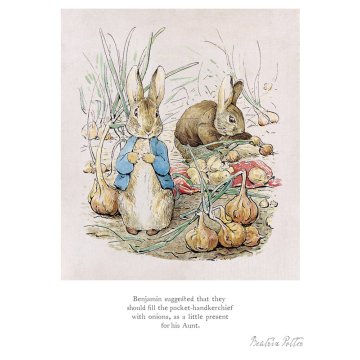 ...they should fill the pocket-handkerchiefOfficial Benjamin Bunny 120th Anniversary PrintBeatrix Potter£85.00
...they should fill the pocket-handkerchiefOfficial Benjamin Bunny 120th Anniversary PrintBeatrix Potter£85.00 -
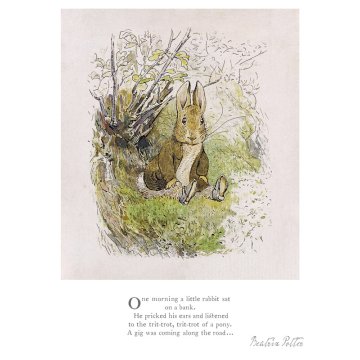 One morning a little rabbit sat on a bankOfficial Benjamin Bunny 120th Anniversary PrintBeatrix Potter£85.00
One morning a little rabbit sat on a bankOfficial Benjamin Bunny 120th Anniversary PrintBeatrix Potter£85.00 -
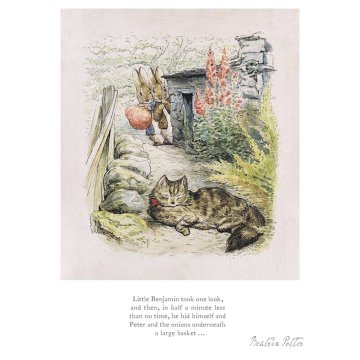 Little Benjamin took one look...Official Benjamin Bunny 120th Anniversary PrintBeatrix Potter£85.00
Little Benjamin took one look...Official Benjamin Bunny 120th Anniversary PrintBeatrix Potter£85.00 -
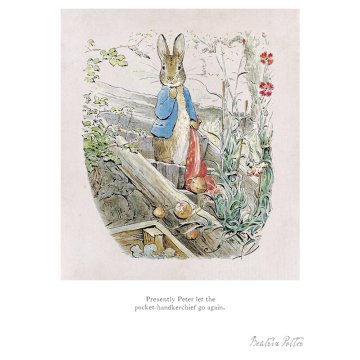 Presently Peter let the pocket-handkerchief go...Official Benjamin Bunny 120th Anniversary PrintBeatrix Potter£85.00
Presently Peter let the pocket-handkerchief go...Official Benjamin Bunny 120th Anniversary PrintBeatrix Potter£85.00 -
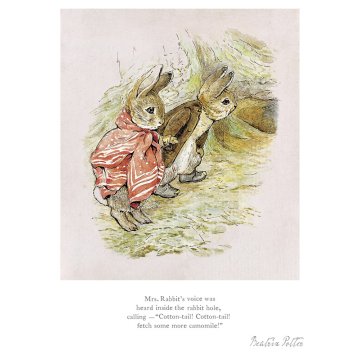 Mrs. Rabbit's voice was heard...Official Benjamin Bunny 120th Anniversary PrintBeatrix Potter£85.00
Mrs. Rabbit's voice was heard...Official Benjamin Bunny 120th Anniversary PrintBeatrix Potter£85.00 -
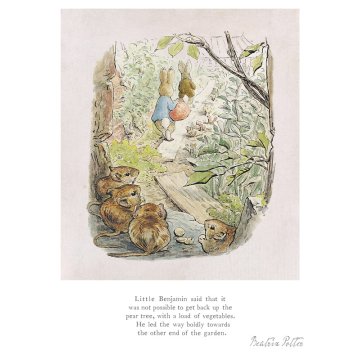 Little Benjamin said that it was not possible...Official Benjamin Bunny 120th Anniversary PrintBeatrix Potter£85.00
Little Benjamin said that it was not possible...Official Benjamin Bunny 120th Anniversary PrintBeatrix Potter£85.00 -
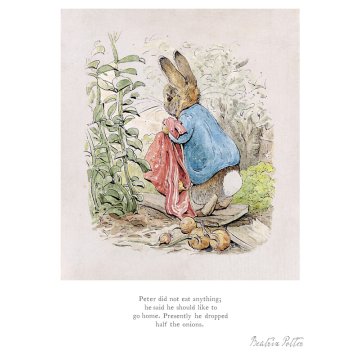
-
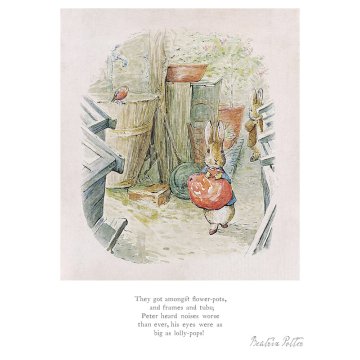 They got amongst flower-pots...Official Benjamin Bunny 120th Anniversary PrintBeatrix Potter£85.00
They got amongst flower-pots...Official Benjamin Bunny 120th Anniversary PrintBeatrix Potter£85.00 -
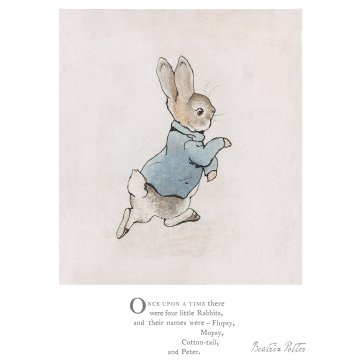
-
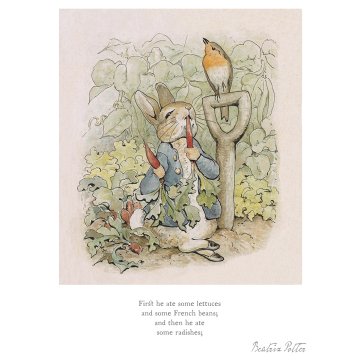
-

-
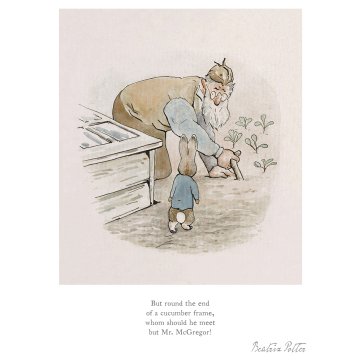 Whom should we meet, but Mr McGregorOfficial Peter Rabbit 120th Anniversary PrintBeatrix Potter£85.00
Whom should we meet, but Mr McGregorOfficial Peter Rabbit 120th Anniversary PrintBeatrix Potter£85.00 -
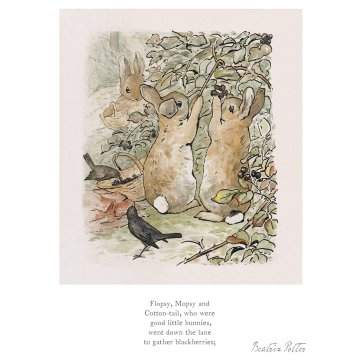 Little bunnies went down the laneOfficial Peter Rabbit 120th Anniversary PrintBeatrix Potter£85.00
Little bunnies went down the laneOfficial Peter Rabbit 120th Anniversary PrintBeatrix Potter£85.00 -
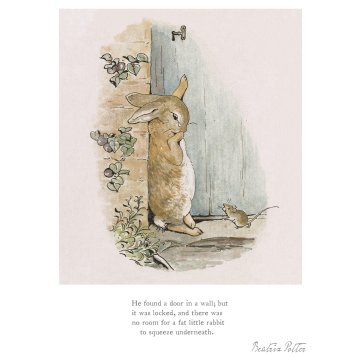
-
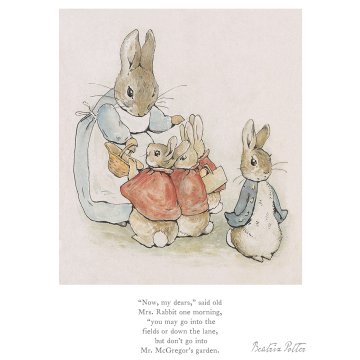
-
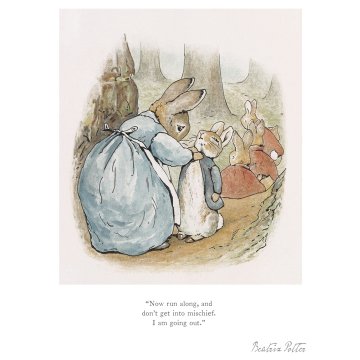
-
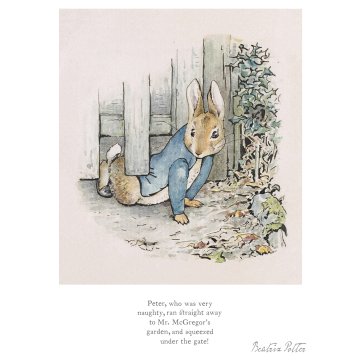
-
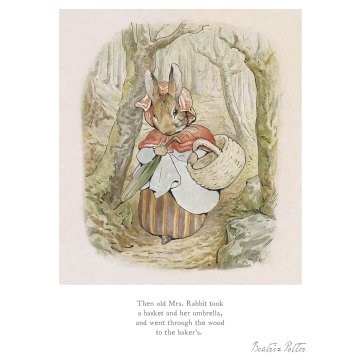
-
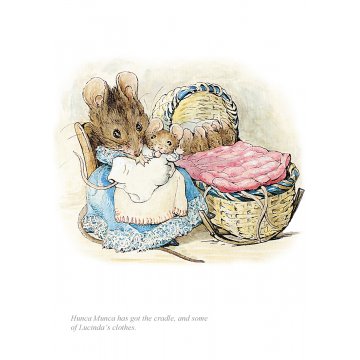
-
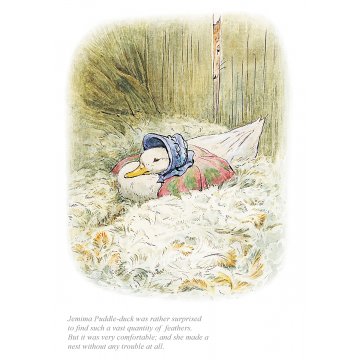 Jemima was surprised to find a quantity of feathersOfficial Collector's Edition PrintBeatrix Potter£79.00
Jemima was surprised to find a quantity of feathersOfficial Collector's Edition PrintBeatrix Potter£79.00 -
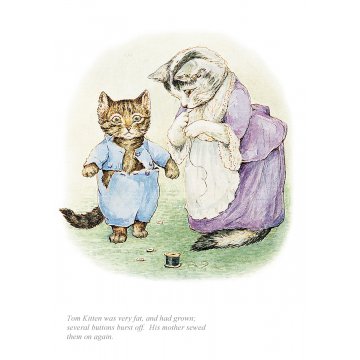
-
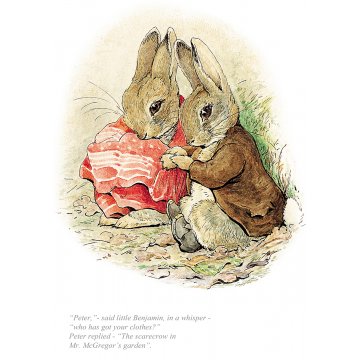
-
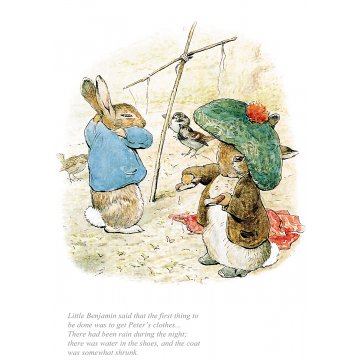
-
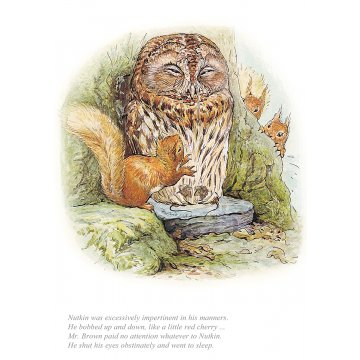 Mr Brown paid no attention to Squirrel NutkinOfficial Collector's Edition PrintBeatrix Potter£79.00
Mr Brown paid no attention to Squirrel NutkinOfficial Collector's Edition PrintBeatrix Potter£79.00 -
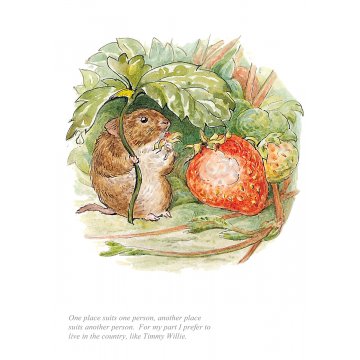
-
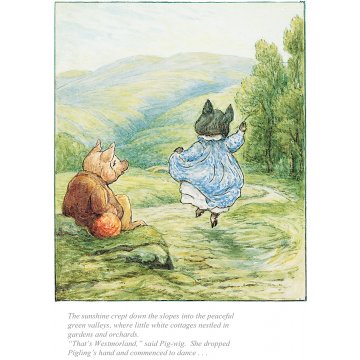
-
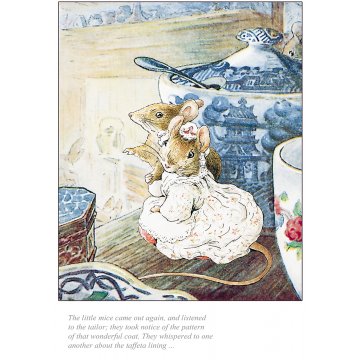

Beatrix Potter was born in London in 1866 and grew up living the conventionally sheltered life of a Victorian girl in a well-to-do household. She was educated at home by a governess with her brother Bertram. Her constant companions were the pet animal she kept which she enjoyed studying and sketching. On summer holidays she delighted in exploring the countryside and learning about plants and animals from her own observations. Beatrix Potter devoted most of her energy to the study of natural history – archaeology, geology, entomology and, especially, mycology. Fungi appealed to Potter’s imagination, both for their evanescent habits and for their coloration. Encouraged by Charles McIntosh, a revered Scottish naturalist, to make her fungi drawings more technically accurate, Potter not only produced beautiful watercolours, but also became an adept scientific illustrator. By 1896 Beatrix Potter had developed her own theory of how fungi spores reproduced and wrote a paper, ‘On the Germination of the Spores of Agaricineae‘. This was presented to a meeting of the Linnean Society on 1 April 1897 by one of the mycologists from the Royal Botanic Gardens, Kew, since women could not attend Society meetings. Her paper has since been lost. Beatrix Potter’s career as a children’s illustrator and storyteller began when The Tale of Peter Rabbit was published by Frederick Warne and Co. in 1902. The public loved it as soon as it appeared and Beatrix went on to produce on average two books a year until 1910.
In the early years of publishing her editor was Norman Warne and they fell in love and became engaged in 1905. Unfortunately the marriage never took place as Norman died suddenly. The money Beatrix Potter earned from her ‘little books’, as she called them, gave her financial independence and she began to purchase property in her beloved Lake District. In 1913 she married William Heelis, a Lakeland solicitor, and made Hill Top farm in the village of Sawrey her permanent home. Writing and painting began to take second place to farming, sheep-breeding and buying stretches of the beautiful Lakeland countryside to ensure their conservation. When she died in 1943 Beatrix Potter bequeathed fifteen farms and over 4,000 acres to the National Trust – a gift which protected and conserved the unique Lake District countryside. Her books, her art, her Herdwick sheep and her indomitable spirit are all part of her enormous legacy.
We hope you enjoy viewing our collection of Beatrix Potter Collector's Edition prints.
.jpg)
